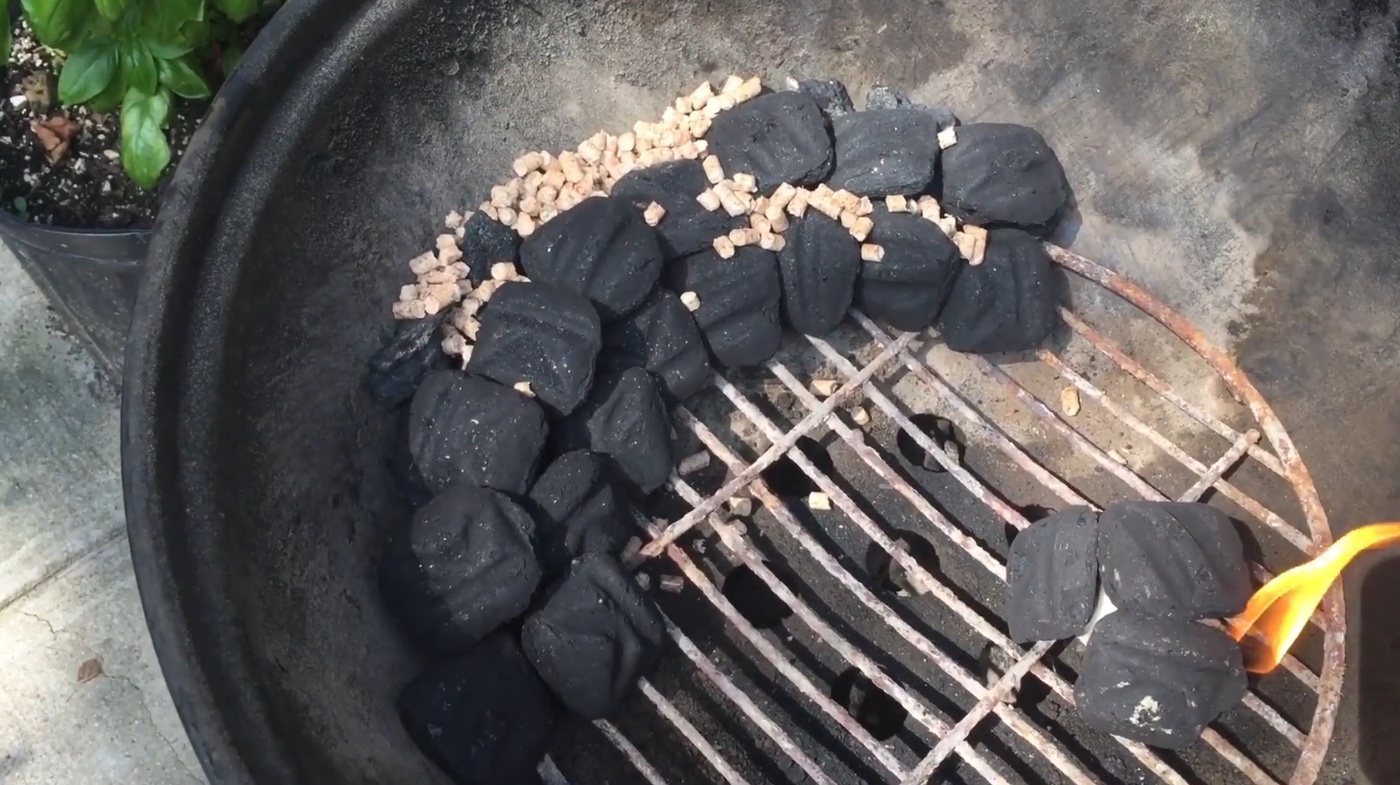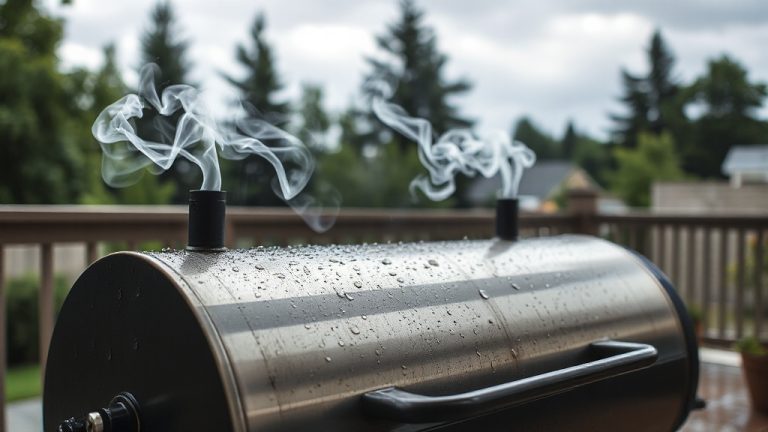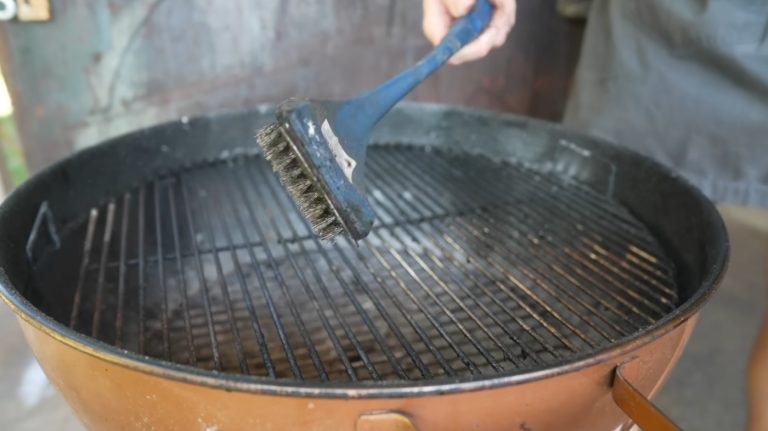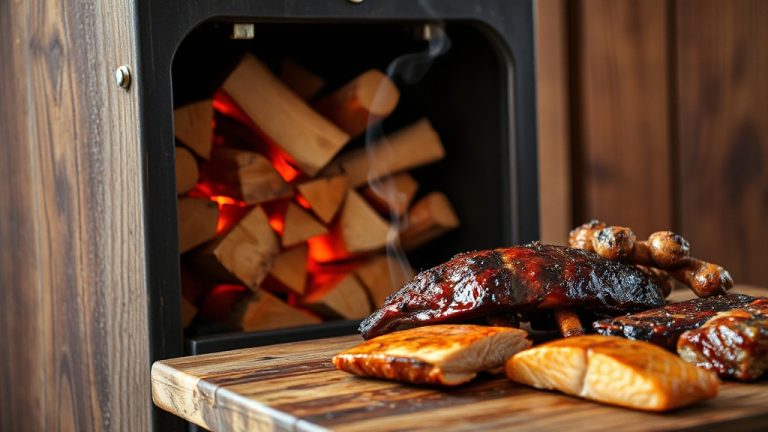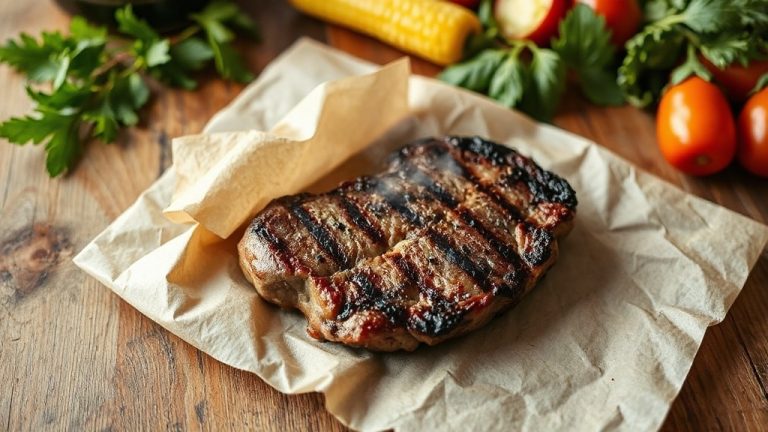Can You Use Pellets in a Wood Chip Smoker: Tips for Use
You can use pellets in a wood chip smoker, but you’ll need to manage differences carefully. Pellets burn slower and produce milder smoke, unlike quick-burning chips, so expect a different flavor profile.
Make sure pellets stay dry to avoid clogs, and monitor temperatures closely since chip smokers aren’t designed for pellets. Maintain proper airflow and clean your smoker often to prevent jams or flare-ups.
If you want to master this technique, understanding fuel behavior and flavor impact will help you elevate your smoking game.
Key Takeaways
- Pellets can be used in wood chip smokers but burn slower and produce milder smoke than chips, affecting flavor intensity.
- Wood chip smokers lack automated feeding, making pellet combustion less consistent and requiring frequent manual adjustments.
- Using pellets in chip smokers risks feed jams, temperature spikes, and uneven burning due to design limitations.
- Proper airflow and dry, food-grade hardwood pellets are essential for safer, more efficient pellet burning in chip smokers.
- Expect a smoother, less aromatic smoke profile with pellets, ideal for subtle flavor infusion and extended cook times.
Differences Between Wood Chips and Pellets
Although both wood chips and pellets serve as popular fuel sources for smoking, their fundamental differences in composition and burning behavior greatly influence how you manage your smoker and the flavors you achieve.
Wood chips are irregular pieces of natural wood that ignite quickly and produce a strong, sweet smoke but burn out fast, demanding frequent replenishing and close attention, much like managing the marbling intensity in Wagyu beef to maintain optimal flavor.
Pellets, made by compressing sawdust into uniform, dense cylinders, burn slower and more evenly, offering better temperature control and longer smoke duration. Their drier burn creates less ash and residue, making cleanup easier.
Grilla Grills, known for their innovative grilling technology, design products that optimize the use of both types of fuel for superior outdoor cooking performance.
However, pellets deliver a milder smoke with less aromatic complexity. Understanding these distinctions helps you choose the right fuel for your smoking style, balancing flavor intensity with convenience and burn time.
Comparison Table Between Pellets & Wood Chips
| Product/Fuel Type | Wood Chips | Pellets |
|---|---|---|
| Burn Rate | Fast, needs frequent refills | Slow, lasts longer |
| Smoke Flavor | Strong, robust, aromatic | Milder, smoother, less aromatic |
| Temperature Control | Quick heat spikes, less stable | More consistent, but manual adjustments |
| Cleanup | More ash and residue | Less ash, easier cleanup |
| Compatibility | Fully compatible with chip smokers | Can be used, but not designed for pellets |
How Pellets Perform in a Wood Chip Smoker?
When you use pellets in a wood chip smoker, you’ll notice that their dense, compressed form burns slower and drier than loose wood chips, which affects ignition and combustion patterns.
This slower burn can offer steadier heat but may cause irregular combustion without a controlled feeding system. All pellet smokers feature an automated auger system that maintains steady temperatures, which wood chip smokers typically lack.
Wood chip smokers lack the auger mechanisms designed for pellets, so manual feeding is necessary, which complicates maintaining consistent heat. Also, pellets produce a cleaner, milder smoke flavor that might differ from the robust smokiness you expect with chips.
To optimize performance, proper airflow management is crucial to balance temperature and burn rate when using pellets in chip smokers.
Without pellet augers, manual feeding in chip smokers makes steady heat and traditional smoky flavors harder to achieve.
Consider these points when using pellets in chip smokers:
- Slower, drier burn leads to longer smoldering but challenges ignition
- Manual pellet feeding risks uneven combustion
- Milder smoke flavor alters traditional chip smoker taste
- Potential temperature fluctuations without automated controls
Safety and Mechanical Considerations
Because wood chip smokers aren’t engineered for pellet fuel, you’ll face unique safety and mechanical challenges when using pellets in them. Pellets differ in size, density, and burn rate, which can cause feed jams and erratic combustion.
Pellets burn longer and more steadily than chips, providing more consistent heat but requiring automated feeding. Using a smoker without proper shelter in wet conditions can further complicate temperature control and fuel performance.
Without an auger or automated feeding system, pellets may burn unevenly, leading to unsafe temperature spikes or flare-ups. You must closely monitor ventilation to avoid smoke buildup or overheating, as chip smokers lack sensors optimized for pellet combustion.
Using pellets can also increase creosote deposits, risking corrosion and fire hazards. Additionally, this misuse might accelerate wear on feeding mechanisms and heating elements.
To minimize risks, ensure thorough cleaning, maintain vigilant temperature control, and comprehend your smoker’s limitations before experimenting with pellets. Proper maintenance after exposure to moisture is critical to prevent corrosion and electrical issues.
Flavor Profiles When Using Pellets
If you want to master smoking with pellets, understanding their distinct flavor profiles is essential. Pellets offer a smoother, milder smoke compared to traditional wood chips, allowing you to tailor flavors precisely.
Managing the smoker temperature carefully ensures that the smoke infuses without overpowering the food.
Master pellet smoking by learning flavor profiles for smoother, milder, and precisely tailored smoky tastes.
For instance, hickory delivers a balanced, assertive smoke ideal for beef, while apple pellets bring a sweet, mild touch perfect for poultry and pork. Mesquite, on the other hand, packs a powerful punch, so you’ll want to use it sparingly to avoid overwhelming your food.
- Hickory: moderate, versatile smoke for ribs and beef
- Apple: sweet, gentle flavor for ham, poultry, and vegetables
- Mesquite: intense, bold smoke suited for grilled chicken and brisket
- Cherry: mild sweetness adding subtle fruitiness, great with steak
You can also create layered flavors by mixing different wood pellets, enhancing the complexity of your smoked dishes with a blend of woods. Choosing the right pellet lets you craft complex, balanced smoky flavors every time.
Tips for Experimenting With Pellets in Your Smoker
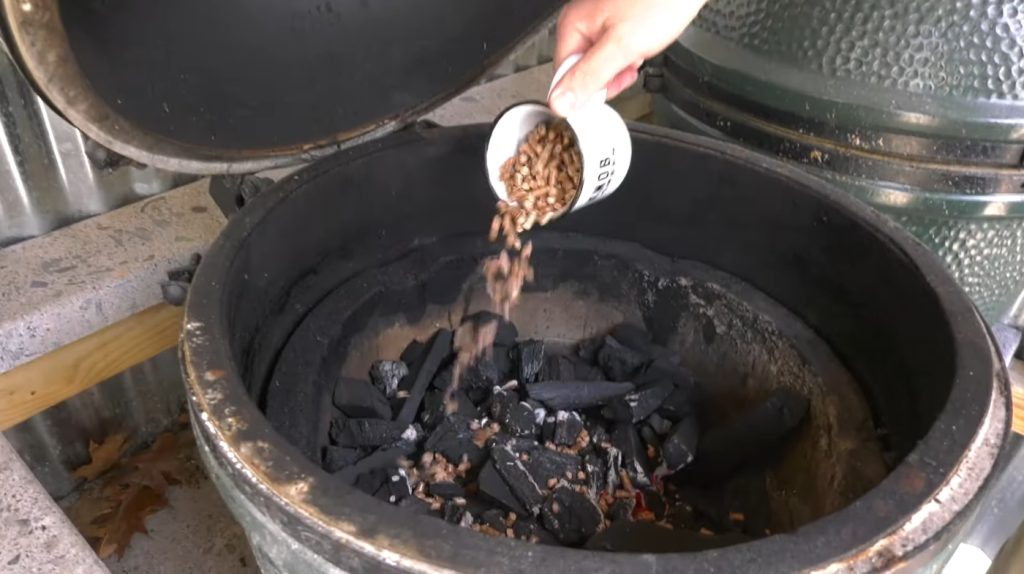
Although pellet smoking offers convenience and consistency, experimenting with different pellets and techniques can elevate your results considerably.
Start by thoroughly cleaning your smoker’s firepot and ensuring your smoker supports pellet use. Use hardwood, food-grade pellets stored dry for ideal burn and flavor. Pellets are typically made from natural wood with an optimal moisture ratio to produce thin, blue smoke that enhances flavor.
Experiment with blends but avoid mixing pellets with chips directly. Monitor temperature closely, adjusting pellet types for desired heat levels and smoke intensity. Remember that consistent heat and smoke release are key for achieving balanced smoky flavor.
| Aspect | Tip |
|---|---|
| Smoker Prep | Clean firepot; verify hopper capacity |
| Pellet Choice | Use hardwood, food-grade pellets |
| Storage | Keep pellets dry to prevent clogs |
| Smoke Control | Use smoke tubes for chips; monitor smoke output |
| Temperature | Adjust pellets for heat; use digital thermostat |
Frequently Asked Questions
What Pellet Brands Are Best for Use in Wood Chip Smokers?
You’ll want to choose pellets that burn clean and produce consistent smoke in your wood chip smoker. Brands like Camp Chef Premium Hardwood Pellets and Weber SmokeFire offer low-moisture, kiln-dried options that minimize ash and maintain steady heat.
Lumberjack and Bear Mountain BBQ pellets provide robust, flavorful hardwood blends. CookinPellets’ 40PM Perfect Mix balances smoke intensity and heat well. Experiment with these to match your smoker’s performance and your flavor preference.
How Do Pellets Affect Cleanup Compared to Wood Chips?
Imagine opening your smoker after a long cook—you’re greeted with minimal ash, easy-to-clean surfaces, and less sticky residue. That’s the advantage you get using pellets. They burn cleaner and more uniformly than wood chips, so you’ll spend less time scraping tar and ash.
Pellets produce less soot and creosote, reducing deep cleaning. Plus, their consistent burn means fewer surprises, making your cleanup routine smoother and quicker every time.
Are Flavored Pellets Safe to Use in Wood Chip Smokers?
You can safely use flavored pellets in wood chip smokers if they’re food grade and designed for smoking. These pellets use natural hardwood blends like hickory or apple, providing rich flavor without harmful additives.
Just verify your smoker can handle pellets without overheating or damage. Avoid any pellets with chemical binders or non-food grade fillers, as they pose health risks and unpleasant tastes. Always follow your smoker’s guidelines for best results.
Can Mixing Pellets and Wood Chips Damage My Smoker?
Mixing pellets and wood chips in your smoker can be a double-edged sword. While it might boost flavor, irregular chip sizes can clog the auger and cause jams.
Chips burn faster, leading to temperature swings that stress components and risk flare-ups. Ash buildup from chips can choke airflow, reducing efficiency and damaging parts. To avoid turning your smoker into a headache, stick to manufacturer guidelines and monitor closely when mixing fuels.
Fuel Smarts: Understanding Pellet Behavior Boosts Your BBQ Game
You can use pellets in a wood chip smoker, but remember, “one size doesn’t fit all.” Pellets burn differently and may affect temperature control and flavor. Always check your smoker’s design to avoid mechanical issues or safety risks.
Experiment cautiously, adjusting your technique to balance smoke and heat. With careful attention, you can unleash unique flavors and expand your smoking game—just don’t expect pellets to behave exactly like wood chips.
